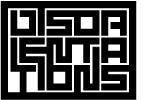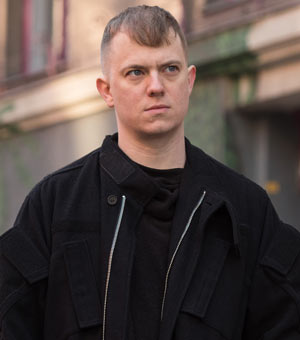GG Allin Hails a Cab
by Travis Jeppesen on October 14, 2011
First he got high enough to taste the ceiling. Poster announces live murder onstage. The city is a wild animal – voice of the police broadcast on shortwave frequency. Paranoia wears leopard-print pants. My friends address me as asshole. They told me I once belonged somewhere. So I let them follow me. Only to find the streets were lined with saliva: pizza by the slice.
Drunk saturation mobility. You love him more than you drink. Sally Salacious sings the boyfriend medley, no one will get in her way. Everybody competing to get heard. Repeat it hard enough and they’ll all go away.
I am here together with you, hairless and honest. Is that her real voice? The Hair Goddess. Coprophiliacs on parade. My life as a follower.
Maybe you forgot to put your arm around her at the right moment. Lead the children down the toilet of your thoughts – all the rats that once offered a definition. And the black-haired girl who just wanted a daddy. Even went on the daytime talkshow beside him. Cancer rains down like garbage in the streets. This is a story of New York City.
I was always the one to be prepared. On time every time, the voices. Puerto Ricans playing soccer in the cage. If I can’t wear women’s clothing I’d rather go naked. But no the men in blue will get you. Don’t get feces on my leather jacket; I am walking down the street.
Everybody talk at once please, I love it when that happens. Houston Street has gone to the pilgrims: this is what their children smell like.
They named him Jesus Christ.
Oh, death is such a non-spectacle at times. Whether in the jungle of cities or the desert of thought. I’m the living switchblade, sandwichbreath, syphilis on the docks. He stepped over a transparent Braille Bible on his way southwards aiming for the towers.
Borders never disappear; once trespassed, they are merely reset. A videogame version of blood.
His brother fucked off into a bottle of whiskey. Man those girls were haunted. Song of certainty goes like this. Look into my eyes and extract an emotion. Let it be known you can never think fast enough. The law doesn’t require tennis shoes.
Can you play my favorite song. The concert consisted of two songs and a punch in the face. Most of the audience had already run away by the time he shit on the floor, the sound had been turned off. Don’t invite violence into your gas station, kids. This is a story of New York City. The day was an ultimate example of one. Let me out into the junkyard. The Hair Goddess is squealing.
That bitch’s son got born soon after. She would’ve named it after him, had she been able to spell his name. Jesus Christ was someone else. There aren’t too many white kids around here. He’ll have to eat it with salt and pepper.
Things were never so direct, rock n’ roll. Shadow forecast, then nightfall. I wanna go to Drugland before it gets too dark to think it through. This makes the sixteen-year-old beside me snicker. I’ve met her father, I know what she’s looking for.
Life would be so much easier if you could fry it. Next week I’ll go down south with my boys there, record an album. With my brother we’re gonna tour Europe soon. Plans are underway. No I don’t speak no German. They can jail me but they can’t jail hate. He was a worthless son of a bitch. Get these motherfuckers away from me, we can’t bring them all with us. There’s a taxi, I’m going uptown. I don’t want to go to Brooklyn.
The Names
by Travis Jeppesen on October 9, 2011
The Names is a section from The Suiciders, a novel. Read it here.
Li Gang interviewed at Whitehot Magazine
by Travis Jeppesen on August 20, 2011
TransLife in Beijing
by Travis Jeppesen on August 19, 2011
Wim Delvoye in Beijing
by Travis Jeppesen on June 27, 2011
The emergent church of Wim Delvoye is one that attempts to unearth the basest ethos of a tormented, corporeal Catholicism, while simultaneously debunking all that is considered holy in the secular world.
My review of Wim Delvoye’s show is now online at Whitehot Magazine of Contemporary Art.
I’m in China
by Travis Jeppesen on June 22, 2011
….in case you haven’t heard.
Will be until late July, it looks to be at the moment.
If you need to get in touch, the best way is through e-mail: travis.jeppesen@gmail.com.
Facebook don’t work.
John Miller in Cologne
by Travis Jeppesen on June 22, 2011
Miller’s work is always defined by a certain effortlessness at crossing the cerebral with the visual. In this, he is more motivated by his subject matter than any one particular mode of expression or conceptual framework. The result is that it’s never easy to recognize when we’re looking at a John Miller work; his free-ranging style includes both Duane Hanson-esque statues of heroes of consumerism (Now We’re Big Potatoes, 1992) and Dieter Roth-ian excess, as in his 1994 Topology for a Museum, six pedestals holding up pukelike mounds of sculpted grimy excess, with children’s toys and Pepsi cans occasionally emerging from the muck. It all depends on what idea he is captivated by at any given moment, and following those captivations becomes the adventure of following John Miller’s work.
My review of John Miller in Cologne, at Whitehot Magazine of Contemporary Art.
Thomas Struth in Duesseldorf
by Travis Jeppesen on June 11, 2011
Longitude’s Necklace
by Travis Jeppesen on June 4, 2011
“Her heart is boundless, bleeding. She is the porn star mother of us all, the whore, and she doesn’t even acknowledge her own presence once the forest threatens to overtake her human-style longing. She dresses in fur and feathers, leaves and twigs to make herself invisible. You can blend in with nature, which is nothing less than an extended series of disasters, all competing to annihilate us. We won’t let it. We will become like nature, and thus win this war, the war against the silence that bleeds in our mouths from afar. High up, the eagles squat over us on the tree branch. Those trees are higher than the sky’s own children. We can’t own the sky, but we can at least see which parts of the ground have evaded us the longest. Then we will know how to answer these questions. We will learn what it means to ask them. We will go inside the knife blades. We will speak the language of the worm.”
“Longitude’s Necklace,” a section from The Suiciders, appears in the new issue of VLAK.

